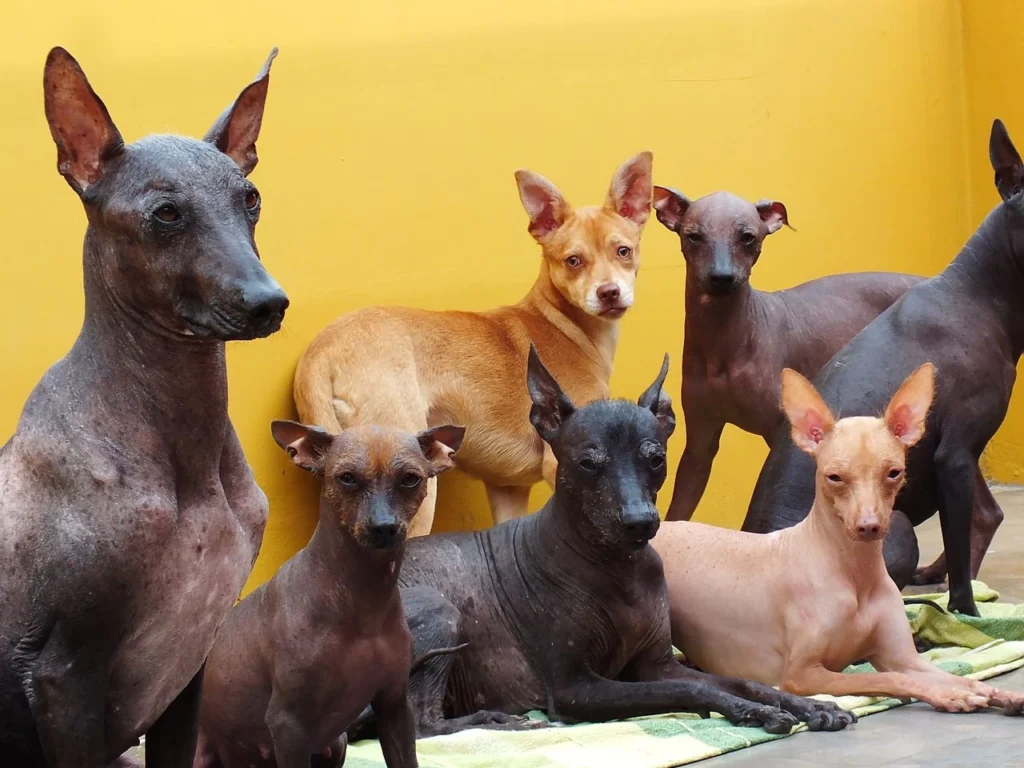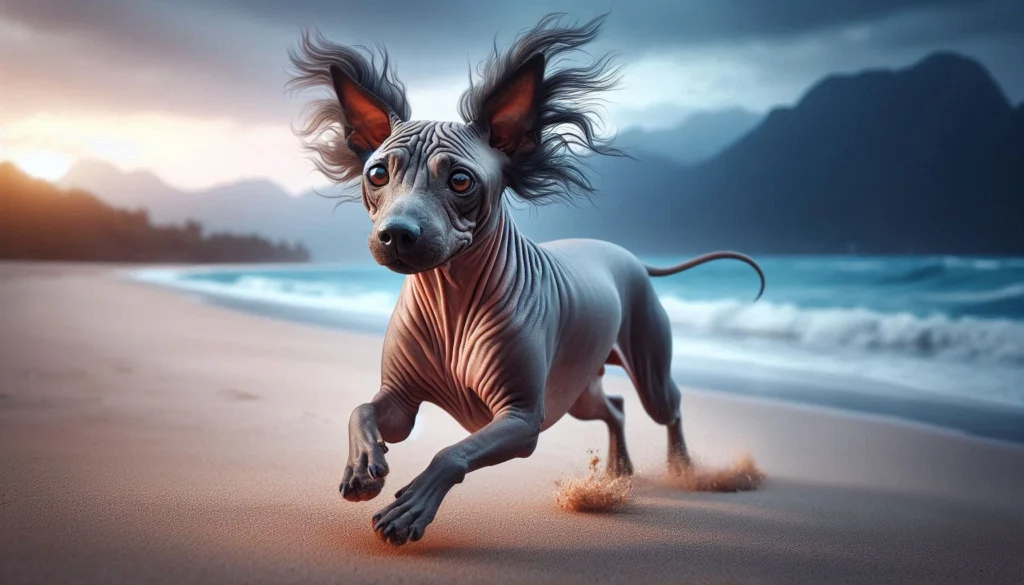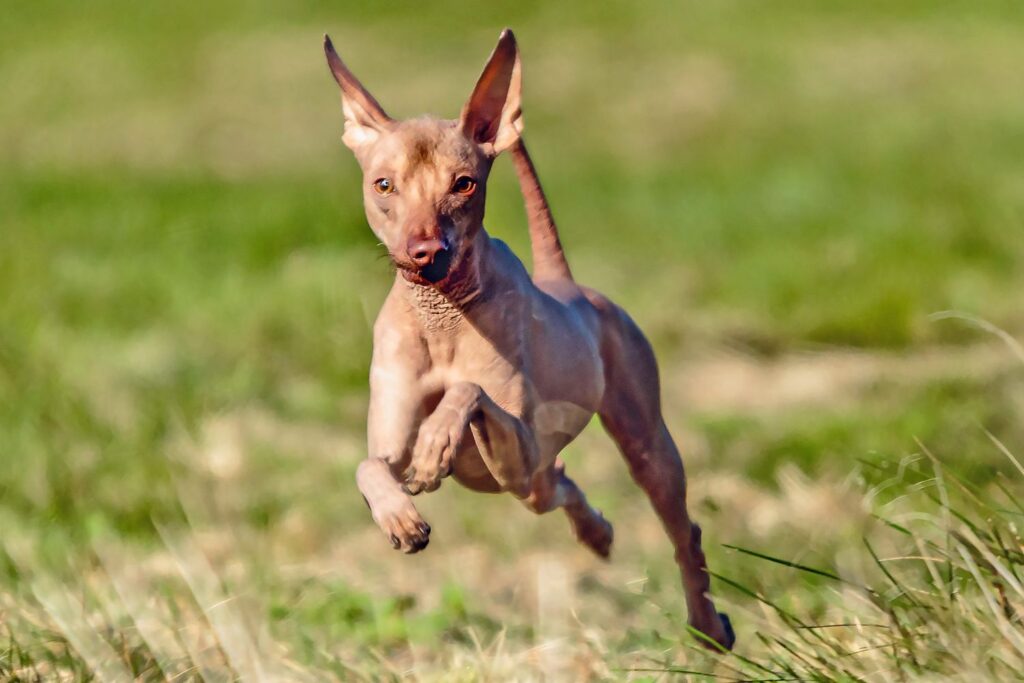Table of Contents
Ecuadorian Hairless Dog Breed
The Ecuadorian Hairless dog, also known as the Perro Sin Pelo Ecuatoriano, is a rare and unique breed that stands out due to its lack of fur and distinctive appearance. Known for its friendly and energetic personality, this breed is gaining popularity among dog enthusiasts and families alike. Their smooth, hairless skin and alert demeanor make them an intriguing addition to any household.
History and Origin

The Ecuadorian Hairless dog traces its roots back to ancient South America. Believed to have descended from dogs that accompanied the indigenous tribes, this breed has a rich cultural history. It is closely related to other Latin American hairless breeds, such as the Peruvian Inca Orchid and the Xoloitzcuintli (Mexican Hairless dog). Historically, these dogs were revered for their supposed healing properties, with ancient civilizations believing that their warm, hairless bodies could alleviate ailments like arthritis.
Physical Characteristics

Size and Build
The Ecuadorian Hairless dog is a small to medium-sized breed, typically weighing between 12 to 25 pounds and standing about 12 to 18 inches tall at the shoulder. Their build is lean and athletic, with a graceful yet sturdy frame.
Coat Type and Colors
As their name suggests, these dogs are predominantly hairless. However, some may have sparse tufts of hair on their head, feet, or tail. Their skin can come in various shades, including black, brown, gray, and pink, often with mottled patterns. The lack of fur means they require special care to protect their skin from the sun and cold.
Distinctive Features
One of the most striking features of the Ecuadorian Hairless dog is its smooth, hairless skin. Their ears are typically large and erect, giving them an alert and inquisitive expression. They have a well-defined muzzle and a tail that may be carried low or curled over the back.
Temperament and Personality
Interaction with People
The Ecuadorian Hairless dog is known for its affectionate and loyal nature. They form strong bonds with their families and are often described as “velcro dogs” due to their desire to be close to their owners. They are intelligent and eager to please, making them relatively easy to train.
Interaction with Children and Other Animals
These dogs are generally good with children, displaying a playful and gentle demeanor. However, as with any breed, early socialization is crucial to ensure they are comfortable around kids and other pets. They tend to get along well with other dogs, especially when raised together, but can be wary of strangers at first.
Health and Lifespan
Common Health Issues
The Ecuadorian Hairless dog is relatively healthy but can be prone to certain genetic conditions. Common health issues include dental problems, as their teeth can be prone to decay, and skin issues due to their lack of fur. Owners must take special care to protect their skin from sunburn and dryness.
Average Lifespan
The average lifespan of the Ecuadorian Hairless dog is between 12 to 16 years. With proper care, regular veterinary check-ups, and a balanced diet, these dogs can live long and healthy lives.
Health Maintenance Tips
- Dental Care: Regular brushing and dental check-ups are essential to prevent dental diseases.
- Skin Care: Use dog-safe sunscreen and moisturizers to protect their skin.
- Diet: Feed a high-quality, balanced diet to maintain their overall health.
Care and Grooming

Grooming Needs
The Ecuadorian Hairless dog has minimal grooming needs compared to other breeds. Regular bathing is necessary to keep their skin clean and free of oils and dirt. Moisturizing their skin is crucial to prevent dryness and cracking. Regular nail trimming and ear cleaning are also recommended.
Exercise Requirements
These dogs are active and energetic, requiring daily exercise to keep them happy and healthy. A combination of walks, playtime, and mental stimulation through training or puzzle toys will help meet their needs.
Dietary Recommendations
A diet rich in high-quality protein and balanced nutrients is essential. Consult with a veterinarian to determine the best diet plan for your dog, considering any specific health needs or allergies.
Training and Socialization
Training Tips
The Ecuadorian Hairless dog is intelligent and responds well to positive reinforcement training methods. Consistency and patience are key. Basic obedience training should start early to establish good behavior patterns.
Socialization Tips
Early socialization is important to ensure the dog is well-adjusted and comfortable in various environments. Expose them to different people, animals, and situations to build their confidence and reduce potential anxiety.
Challenges
Due to their sensitive skin, these dogs may be more susceptible to skin irritations from certain environments or grooming products. Additionally, their intelligence can lead to stubbornness if not properly trained and stimulated.
Suitability as a Family Pet

Family Environment
The Ecuadorian Hairless dog is well-suited for families of all sizes. They thrive in a loving, active household where they can participate in family activities. Their size makes them adaptable to both apartment living and homes with yards.
Energy Levels
These dogs have moderate to high energy levels. They enjoy playing and being active but are also content to relax with their owners after a good exercise session.
Fun Facts and Trivia
- Ancient Roots: The Ecuadorian Hairless dog has been around for centuries, with historical significance in South American cultures.
- Warm Bodies: Due to their lack of fur, their body temperature is slightly higher, making them feel warm to the touch.
- Therapeutic Beliefs: Ancient civilizations believed that these dogs had healing properties and could alleviate various ailments.
Dog Breeds Similar to the Ecuadorian Hairless Dog



- Peruvian Inca Orchid: Another hairless breed from South America, known for its elegant appearance and affectionate nature.
- Xoloitzcuintli (Mexican Hairless Dog): A close relative with similar characteristics, valued for its historical and cultural significance in Mexico.
- Chinese Crested: A small, hairless breed with a playful personality and distinctive tufts of hair on its head, feet, and tail.
Conclusion
The Ecuadorian Hairless dog is a fascinating and unique breed with a rich history and a loving, loyal temperament. Their distinctive appearance and affectionate nature make them a wonderful addition to many households. If you are considering adding a new member to your family, the Ecuadorian Hairless dog might be the perfect fit. Learn more about this incredible breed and consider welcoming one into your home.
FAQ
Is the Ecuadorian Hairless dog a dangerous breed?
No, the Ecuadorian Hairless dog is not a dangerous breed. They are known for their friendly and affectionate nature. With proper training and socialization, they can be great companions for families and individuals alike.
Is the Ecuadorian Hairless dog a good guard dog?
While the Ecuadorian Hairless dog is alert and may bark to alert their owners of strangers, they are not typically considered guard dogs. They are more suited to being companion animals due to their friendly and sociable disposition.